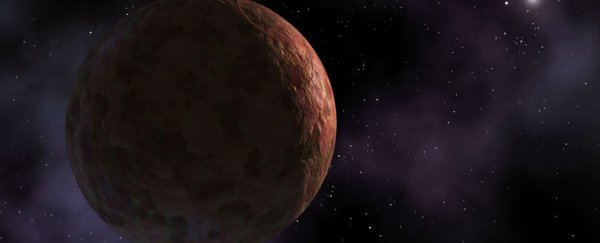Hints of two more planets lurking undetected way out near the edge of our Solar System have been found thanks to a new analysis of the belt of objects called the 'extreme trans-Neptunion objects' (ETNO).
A team of astronomers from the Complutense University of Madrid in Spain and the University of Cambridge in the UK studied the orbits of 13 such ETNOs, including the dwarf planet Sedna, and found that they weren't moving as expected. Something appears to be altering their orbits, the team reports, and that 'something' could be a couple of hidden planets at least the size of Earth, if not bigger.
"This excess of objects with unexpected orbital parameters makes us believe that some invisible forces are altering the distribution of the orbital elements of the ETNO, and we consider that the most probable explanation is that other unknown planets exist beyond Neptune and Pluto," lead scientist, Carlos de la Fuente Marcos from the Complutense University of Madrid, told the Spanish Scientific News Service. "The exact number is uncertain, given that the data that we have is limited, but our calculations suggest that there are at least two planets, and probably more, within the confines of our Solar System."
Publishing their findings in two articles in the Monthly Notices of the Royal Astronomical Society Letters - available here and here - the researchers have estimated that if these planets exist, they would be located 200 astronomical units away from Earth, which is 200 times the distance between Earth and the Sun (one astronomical unit is the distance between the two).
The prospect of two more planets in our Solar System is pretty exciting, but there are problems with the proposal. Firstly, the team noted that the existence of these planets contrdicts current models on the formation of the Solar System, which only works if there are no planets moving in circular orbits further away from the Sun than Neptune, the Spanish Scientific News Service reports.
But a recent discovery supports the possibility that planets could actually form at great distances from their star. Late last year, scientists using the new Atacama Large Millimetre Array (ALMA) of telescopes in Chile found a planet-forming disk more than 100 astronomical units from a star called HL Tauri. This star is younger than our Sun, but more massive, and the confirmed presence of a planet-forming disc some 100 astronomical units away from it makes a case for the possibility that planets could also form as far 200 astronomical units away from their star.
That said, de la Fuente Marco and his team have got their work cut out for them in proving that these two planets actually exist. They're too far away to 'see' with current technology, so they need to continue finding evidence of their influence on what we do know exists in the edges of our Solar System.
